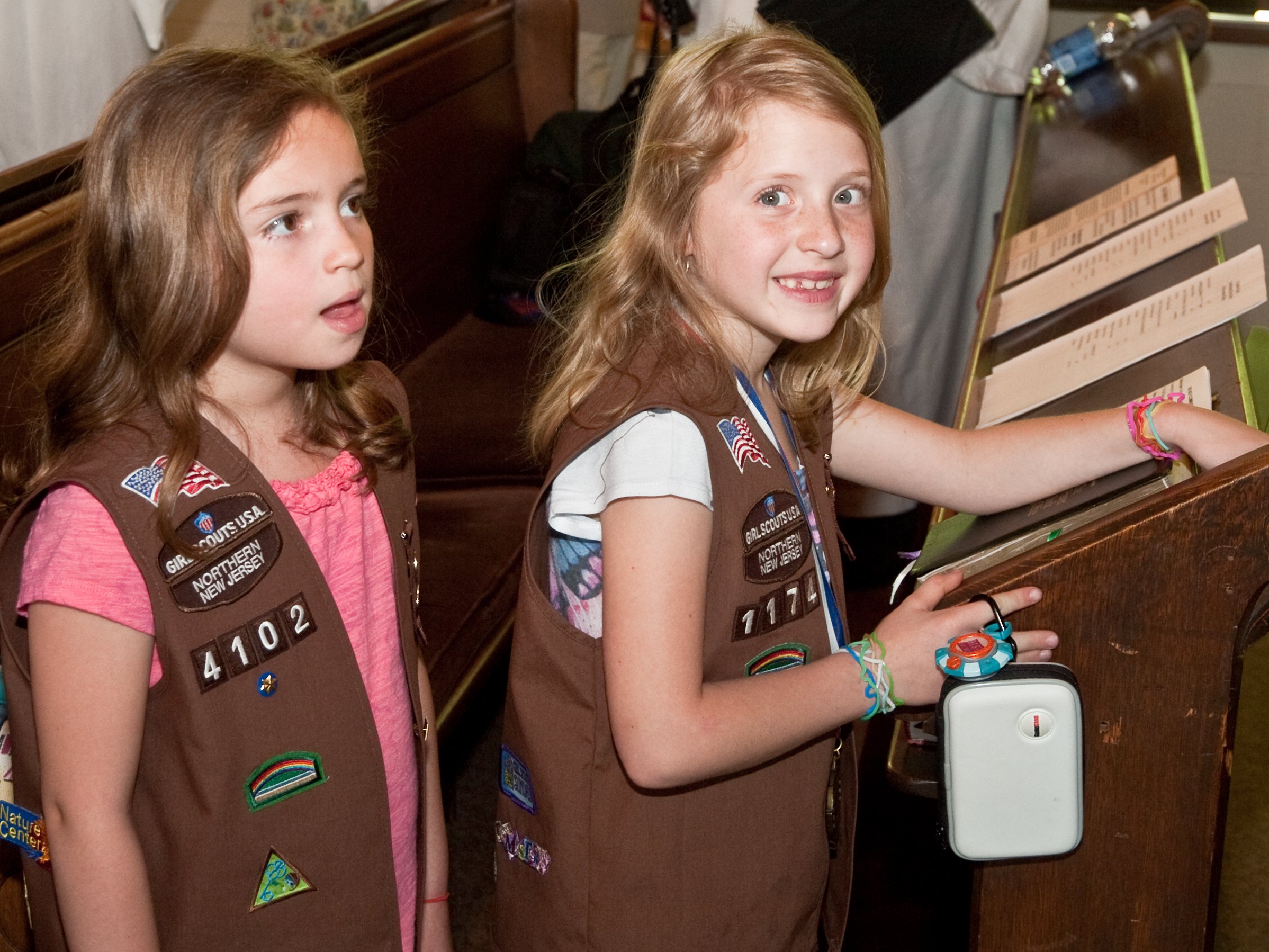Feedback loops 101: Anchors, Waves, & Islands
Relationships are based on feelings of mutuality, trust, and security. These feelings provide blueprints for how we love, negotiate, compromise, and problem-solve. Like a dance, they guide you on how you respond to your partner's moves. But you’re not just dancing with your partner. How you dance harkens back to early attachment relationships with primary caregivers—relational strokes and feedback loops can be positive and negative. How you connect as an adult with family, friends, co-workers, and partners can be traced to these early attachments.
In this blog series, I offer insight into how we learn to relationally dance, focusing on how positive and negative strokes lead to positive and negative feedback loops. No matter your current attachment style, the good news is that like a bad dance move (think Elaine, Seinfeld), you can retrace your steps and learn a better way of dancing with the people in your life. How we learn to connect as children impacts how we connect as adults.
RElational attachment Research in practice
In this space, my objective is not to provide an in-depth analysis of these theories but rather to pull distinguishing features from them to highlight how their work influences my attachment work individuals and couples.
Stan Tatkin, PsyD, MFT, is a clinician, author, PACT developer, and co-founder of the PACT Institute. PACT stands for Psychological Approach to Couples Therapy. He is one of several contemporary marriage therapists who have identified attachment styles as key to understanding how one relates to others. Dr. Susan Johnson developed Emotionally-Focused Therapy, which also focuses on how couples’ engagements are tied to degrees of attachment. Terry Real created Relational Life Therapy, which weaves cultural layers of influence into his approach as well as how we connect with our Adaptive Child and Wise Adult influence our attachments to others; and, last but not least, Esther Perel who developed Relational Intelligence; like Real, Perel looks at attachment, expectations, and Western concepts of the individual and how they impact relationships.
My couples work draws from these influential relational attachment thinkers and practitioners, with additional attention to clients’ history of loss and renewal.
I am a Rock, I am an Island … Or?
In 1965, Simon and Garfunkel released the song, “I am a Rock,” one of the many existential, thought-provoking lyrics the duo wrote, produced, and performed.:
I have my books
And my poetry to protect me
I am shielded in my armor
Hiding in my room safe within my womb
I touch no one and no one touches me
I am a rock I am an island.
This stanza describes Tatkin’s concept of the “island.” An Island feels safest when alone. Escaping into one’s self is the surest way to remain safe. This doesn’t necessarily mean the person doesn’t want intimacy and connection—but early childhood experiences wired their brains to think that “shielded in my armor” and “hiding” on one’s island are much safer harbors. In psychodynamic attachment theory, the island exhibits avoidant attachment.
An Island’s attachment style develops during early childhood in response to an absence of stable and consistent caregiving. One parent may have been overbearing, needing the child to carry the weight of one’s adult emotions; while another parent may have placed high expectations on performance, success, and appearance. Emotional expression was discouraged or denied. The child learned early on that the safest way to be in a relationship is to distance the self from abandonment, harm, or feeling drowned in another’s emotions. Tatkin estimates that 25% of the population are islands.
holding steady like a rock
In Tatkin’s paradigm, Anchors are those who hold steady. He estimates 50% of the population are anchors. They have a healthy ego, believe in one’s self-worth, and have the ability to trust and the ability to weather storms. If you’re an anchor, you feel as fulfilled being independent in exploring the world as spending time with people in intimate settings, sharing emotions, feelings, and love.
If the word “anchor’ conjures up images of being tied down, it might be easier to think of this type of attachment as a Rock.
How often have you heard someone describe an important person in their life as, “He/she/they is my rock”? Anchors/Rocks view relationships positively, actively seek intimacy, and are also able to enjoy spending time away from their partners without fear of abandonment. They are unmoved by fear or insecurities. In psychodynamic attachment theory, the anchor exhibits secure attachment.
An Anchor/Rock’s attachment style developed in early childhood. Caregivers provided stable, reliable, safe care and engagement to the child. Serving as a safe base, the child developed a sense of self, ability to explore, fail, and flourish without the severing of parental ties. The child’s needs were met, which allowed them to trust in and value relationships. Tatkin estimates 50% of the population is an Anchor/Rock.
Waves crashing into your love
U2’s 2014 song, “Every Breaking Wave,” describes the uncertain, back-and-forth manner of two Waves in motion together:
The sea knows where are the rocks
And drowning is no sin
You know where my heart is
The same place that yours has been
We know that we fear to win
And so we end before we begin
Before we begin
”We know that we fear to win / And so we end before we begin,” portrays the desire of two people to be close, but they are unable to maintain intimacy out of fear that it will end poorly, so they move away from each other in order to avoid pain and heartbreak. Waves would eschew the famous passage written by Lord Alfred Tennyson on the death of his dear friend, “Tis better to have loved and lost than never to have loved at all.”
In Tatkin’s paradigm, waves are those who wish to be close to another person but fear rejection; their love ebbs and flows like an ocean wave not because of tides but out of anxiousness. Waves may seek validation from within — “Does she really love me?” — and from without — “Do you really love me?” Such thoughts can become perseverating and lead to feelings of doubt, insecurity, and mistrust. Like an actual wave, the person, in search of validation, may “crash” onto their beloved, who in turn may feel overwhelmed and describe the behavior as "being needy.” Both can retreat, and set the waves in motion all over again. In psychodynamic attachment theory, the Wave exhibits anxious attachment.
A Wave’s attachment style develops in early childhood. Their caregiver may have had mental health or substance abuse issues that prohibited consistent parenting that enabled the child to view relationships as safe, stable, and trustworthy. Children of divorce or the death of a parent may also exhibit anxious attachment behaviors such as an inability to establish healthy boundaries or express their feelings and needs. Instead, a Wave may feel crashing around “all over the place” in an attempt to accommodate the needs of a loved one instead of one’s own. Tatkin estimates 25% of the population are Waves.
WHERE DO we GO FROM HERE?
While our adult attachment styles are wired, i.e., engrained, into our brains, they are not made of concrete.
How we learn to connect as children impacts how we connect as adults. The good news is that our brain’s plasticity allows us to actively rewire connections that no longer support our needs.
Figure out your attachment style(s). Do you lean toward being an Island? Does your partner lean toward being a Wave? Shedding life-long fears of abandonment, dependency, or intimacy is possible. Whether you are an individual seeking therapy or a couple interested in improving or enhancing your relationship, working with a psychotherapist can help you understand your attachment style(s).
Scout out a new path. Leave judgment behind — of yourself, your partner, and your childhood caregivers — by enhancing your curiosity and adventurous spirit. Understanding where you came from can help develop your new path. Like cartographers, you can identify your strengths and weaknesses and head into a new life forged by healthy boundaries, trust, interdependency, and intimacy.
Be kind and patient. Rewiring decades of an attachment style doesn’t happen overnight. The first step (See #1) is understanding. Then committing to a new way of engaging. The phrase, Old Habits Die Hard, isn’t a cliché; it’s reality. Whenever you start to feel an old way of engaging creeping up, make note (best to write it down in a notebook) and become mindful of what triggers you and/or your partner. Take time for each other: Going for a nature walk while discussing the behavior and triggers can diffuse a difficult situation.
Myggie meet Rex. Our amygdala remains from our primitive existence and served us well in times of crisis and mortal threats (Think lions and tigers and bears oh my!) Four amygdala responses include: Fight, Flight, Freeze, or Fawn. Our pre-frontal cortex is the part of the brain that regulates our behaviors and is often referred to as our “Executive Function” because it is able to process information and make informed decisions not in a split second but through rational assessment. I’ve nicknamed my amygdala “Miggie,” knowing that she will be the first to respond when my body senses a threat. At that moment, I remind her that “Rex,” my prefrontal cortex, has everything under control. I then visualize Rex (admittedly a touch of a resemblance to T-Rex) holding Miggie’s hand and walking her through the crisis calmly and assuredly. Over time, as I have rewired Miggie’s split-second responses: Rex responds as an adult to situations, and Miggie gets to play on the beach. (Here’s a great, brief video that describes our amygdala with a neurotic chihuahua.)
Humans are social animals. The majority of us craves human interactions, connections, and intimacy. Early attachment patterns do not have to feed our cravings.
I engage individuals and couples in attachment work to help them understand their attachment styles, learn from them, and re-emerge with an ability to form trusting, loving relationships.
I invite you to contact me for a free 30-minute consult, so we can learn more about each other.
Lisa A. Rainwater, PhD, MA (couns) LCMHC, CCMHC, CGP, CT is the owner of Rainwater Counseling in Winston-Salem, North Carolina, where she provides depth psychotherapy and relational attachment and grief counseling to individuals and couples. She earned a master’s in German Studies from the University of Oregon; a master’s in Counseling from Wake Forest University; and a doctorate in German and Scandinavian Studies from the University of Wisconsin-Madison. Lisa is a Certified Thanatologist through the Association of Death Education and Counseling and is seeking certification in Grief Therapy as Meaning Reconstruction at the Portland Institute for Loss and Transition. She is currently enrolled in a year-long program, Jungian and Post-Jungian Clinical Concepts, at the Centre of Applied Jungian Studies.
Notes
Tatkin, S. (2012). Wired for love: How understanding your partner's brain can help you defuse conflicts and spark intimacy. Oakland, CA: New Harbinger.





